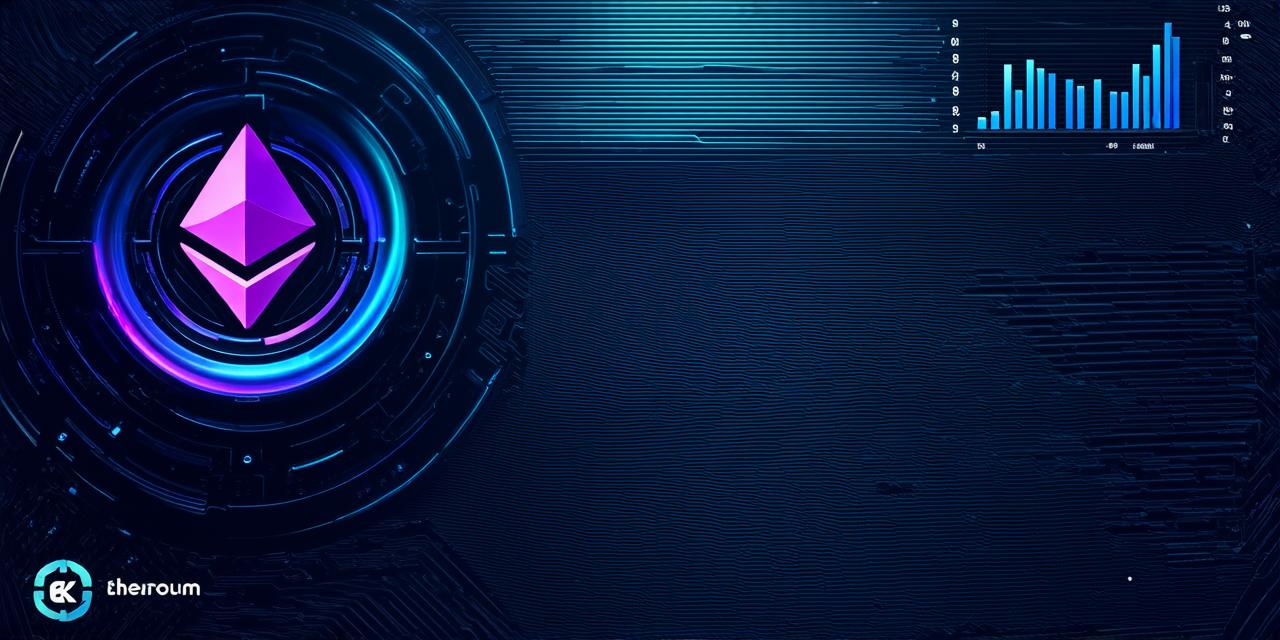The rise of blockchain technology has brought about significant changes in various industries, including finance, supply chain management, and even voting systems. One of the most popular blockchain platforms is
Ether
eum, which was launched in 2015 by Vitalik Buterin. In this article, we will delve into how
Ether
eum blockchain works and provide insights for developers to utilize this technology effectively.
What is
Ether
eum Blockchain?

Ethereum is a decentralized platform that enables developers to create and deploy applications (dApps) on top of the blockchain. Unlike other blockchains like Bitcoin,
Ether
eum’s primary focus is on executing smart contracts rather than facilitating transactions. Smart contracts are self-executing programs that automatically enforce the rules and conditions set by their creators, making it easier to trust transactions and automate processes.
The
Ether
eum Network
The
Ether
eum network is made up of three components:
- Nodes: Nodes are computers or servers that maintain a copy of the
Ether
eum blockchain and participate in validating transactions.
- Mining: Mining is the process of verifying transactions on the
Ether
eum network and adding them to the blockchain. Miners use powerful computing resources to solve complex mathematical problems, which earns them new coins as a reward.
- Blockchain: The
Ether
eum blockchain is a distributed ledger that records all the validated transactions in a secure and transparent manner.
Smart Contracts
Smart contracts are self-executing programs that enable developers to create decentralized applications (dApps) on the
Ether
eum network. They consist of code and data, which is stored on the blockchain. When certain conditions are met, smart contracts automatically execute predefined actions.
Ether
Ether is the cryptocurrency that powers the
Ether
eum network. It is used to pay for gas fees, which cover the cost of executing smart contracts and transactions. Gas fees are paid in ether, and the amount depends on the complexity of the transaction and the current gas price.
How Does
Ether
eum Work?
Mining Process
The mining process involves validating transactions on the
Ether
eum network and adding them to the blockchain. The process works as follows:
-
Transaction Broadcast: When a user initiates a transaction, it is broadcasted to all the nodes in the network.
-
Mining Competition: Nodes compete to be the first to solve a complex mathematical problem known as a Proof of Work (PoW) puzzle. The winner earns the right to add the new block to the blockchain and receive a reward in ether.
-
Block Validation: Once the PoW puzzle is solved, the nodes validate the transactions in the new block and ensure that they comply with the rules set by the
Ether
eum protocol.
-
Block Reward: The winner of the mining competition receives a block reward, which is currently 2
Ether
per block. In addition to the block reward, miners also earn transaction fees for validating transactions.
Gas Fees
Gas fees are used to pay for the cost of executing smart contracts and transactions on the
Ether
eum network. The gas fee is calculated based on the complexity of the transaction and the current gas price. Gas fees are paid in ether, which is the cryptocurrency that powers the
Ether
eum network.
ERC-20 Tokens
ERC-20 tokens are a type of smart contract token that can be used to create decentralized applications (dApps) on the
Ether
eum network. They allow developers to create their own cryptocurrencies and manage their distribution, supply, and demand. ERC-20 tokens are built on top of the
Ether
eum blockchain and can be traded on various cryptocurrency exchanges.
How
Ether
eum is Different from Other Blockchains
Smart Contracts
Smart contracts are self-executing programs that enable developers to create decentralized applications (dApps) on the
Ether
eum network. Unlike other blockchains like Bitcoin, which primarily focuses on facilitating transactions,
Ether
eum’s primary focus is on executing smart contracts.
Decentralized Applications
Decentralized applications (dApps) are applications that run on top of the
Ether
eum blockchain and are not controlled by a single entity. Unlike centralized applications that rely on a central authority to function, dApps are decentralized and operate in a trustless manner.
Cryptocurrency and Token Standardization
ERC-20 tokens are a type of smart contract token that can be used to create decentralized applications (dApps) on the
Ether
eum network. ERC-20 tokens allow developers to create their own cryptocurrencies and manage their distribution, supply, and demand. This standardization of cryptocurrencies and tokens enables interoperability between different dApps and makes it easier for users to access a wide range of decentralized applications.
FAQs
-
What is
Ether
eum?
Ethereum is a decentralized platform that enables developers to create and deploy applications (dApps) on top of the blockchain. Unlike other blockchains like Bitcoin,
Ether
eum’s primary focus is on executing smart contracts rather than facilitating transactions.
2. What are smart contracts?
Smart contracts are self-executing programs that automatically enforce the rules and conditions set by their creators, making it easier to trust transactions and automate processes.
-
What is
Ether
?
Ether is the cryptocurrency that powers the
Ether
eum network. It is used to pay for gas fees, which cover the cost of executing smart contracts and transactions. Gas fees are paid in ether, and the amount depends on the complexity of the transaction and the current gas price.
5. What is DappRadar?
DappRadar is a popular
Ether
eum-based dApp that aggregates information from various other dApps on the
Ether
eum network, providing users with a comprehensive overview of the
Ether
eum ecosystem.
